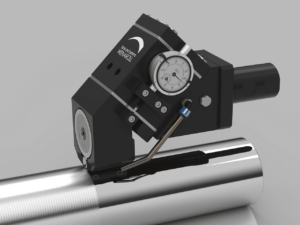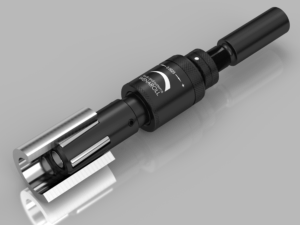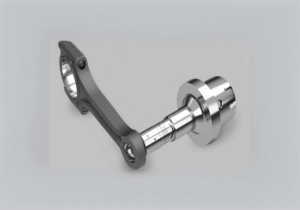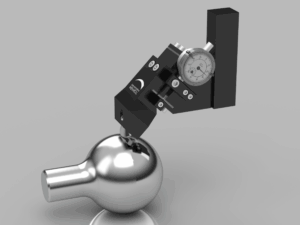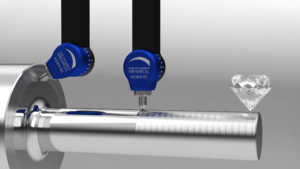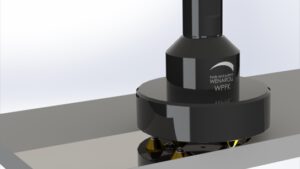
Single Roller Burnishing Tool Type ERGW 14
- Can quickly and reliably produce surfaces with a quality of Rz < 1 µm
- Wear parts have a long service life
- Non-cutting and virtually noiseless machining
- Allows machining up to the face surface
- Enables quick replacement of wear parts
- Requires minimal cooling and can be operated with any cooling system
- Fast and continuously adjustable
- Equipped with a dial gauge for easy determination of rolling force
Description
For the machining of cylindrical shafts, cylindrical bores, flat surfaces, as well as spherical or conical parts, we recommend our single-roller burnishing tools of type ERGW. This tool is available in versions ERGW-5, ERGW-8, and ERGW-14, with the number indicating the roller diameter.
The application areas of the tools are divided as follows:
- ERGW-14: Machining diameter Ø30 – Ø5.000
Tool structure
The tool body of our single-roller burnishing tool type ERGW features a removable roller holder and a machine-specific adapter. A dial gauge on the side of the tool displays the tool spring travel. Using the tables we provide, you can adjust the rolling force continuously and tailor it to your workpiece.
Each tool version also features different roller holders (Versions 1–4), which enable the machining of cylindrical and flat surfaces. The type of feed used distinguishes between the versions:
- Version 1: Cylindrical surface machining from right to left
- Version 2: Flat surface on the left
- Version 3: Cylindrical surface machining from left to right
- Version 4: Flat surface on the right




Machining
This tool has been designed for machining materials with a maximum tensile strength of 1,400 N/mm² and a maximum hardness of 45 HRC. During machining, the workpiece rotates while the tool follows the contour. Only a small amount of lubricant is required for the process, and both emulsion and oil can be used. Machining can be carried out using CNC machines or, for simple contours, conventional machines as well. By adjusting the tool feed, the rolling force can be increased or decreased, allowing a wide range of materials to be processed.
Data Sheet – Technology Guide


